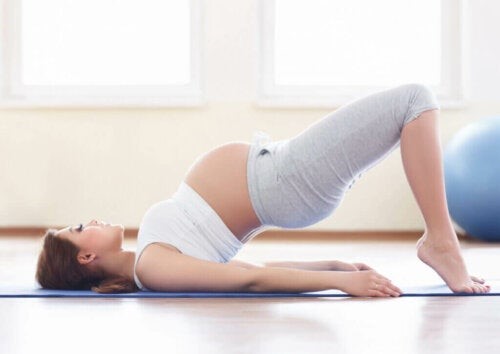Pregnancy is a beautiful journey that comes with numerous physical and emotional changes. One of the most effective ways to manage these changes is through prenatal exercise. This article delves into what prenatal exercise is, its benefits, and why it’s essential for expecting mothers.
What Is Prenatal Exercise?
Prenatal exercise refers to physical activities specifically designed for pregnant women. These exercises aim to enhance the health and well-being of both the mother and the developing baby. Prenatal workouts typically include low-impact aerobics, strength training, flexibility exercises, and pelvic floor strengthening. They are tailored to accommodate the physiological changes that occur during pregnancy and to ensure safety for both mother and child.
Benefits of Prenatal Exercise
Engaging in regular prenatal exercise can offer numerous benefits for expecting mothers. Here are some of the key advantages:
- Improved Cardiovascular Health
Prenatal exercise helps maintain cardiovascular health by improving circulation, reducing blood pressure, and increasing heart efficiency. This is crucial during pregnancy, as the heart works harder to support the growing fetus.
- Enhanced Mood and Mental Health
Exercise releases endorphins, the body’s natural mood lifters. Regular physical activity can help reduce stress, anxiety, and depression, which are common during pregnancy. It also improves sleep quality, contributing to overall mental well-being.
- Reduced Pregnancy Discomforts
Common pregnancy discomforts like back pain, swelling, and constipation can be alleviated through regular exercise. Strengthening the core and pelvic floor muscles helps support the additional weight and reduces strain on the lower back.
- Easier Labor and Delivery
Women who exercise regularly during pregnancy often experience shorter and less complicated labors. Stronger muscles and better endurance can make labor more manageable, reducing the need for interventions such as epidurals and cesarean sections.
- Faster Postpartum Recovery
Maintaining fitness during pregnancy can lead to quicker postpartum recovery. Women who stay active tend to regain their pre-pregnancy shape and fitness levels faster than those who do not exercise.
Safe Exercises for Pregnant Women
While exercise is beneficial, it’s essential to choose safe and appropriate activities during pregnancy. Here are some recommended exercises:
- Walking
Walking is a simple yet effective exercise that can be done throughout pregnancy. It helps improve cardiovascular health without putting undue stress on the joints.
- Swimming
Swimming and water aerobics are excellent low-impact exercises that provide full-body workouts. The buoyancy of the water reduces pressure on the joints and supports the growing belly.
- Prenatal Yoga
Prenatal yoga focuses on gentle stretching, breathing techniques, and relaxation. It helps improve flexibility, reduce stress, and prepare the body for labor.
- Strength Training
Light strength training with resistance bands or light weights can help maintain muscle tone and strength. Focus on exercises that target major muscle groups while avoiding heavy lifting and exercises that strain the abdomen.
- Pelvic Floor Exercises
Kegel exercises strengthen the pelvic floor muscles, which support the uterus, bladder, and bowels. These exercises can help prevent urinary incontinence and prepare the body for labor.
Precautions and Tips for Prenatal Exercise
Before starting any exercise program, it’s crucial to consult with a healthcare provider to ensure its safe based on individual health conditions and pregnancy stage. Here are some general precautions and tips for exercising during pregnancy:
- Stay Hydrated: Drink plenty of water before, during, and after exercise to prevent dehydration.
- Avoid Overheating: Exercise in a cool environment and avoid activities that can cause overheating, such as hot yoga.
- Listen to Your Body: Pay attention to your body’s signals. If you feel dizzy, short of breath, or experience any pain, stop exercising and rest.
- Modify Exercises: As pregnancy progresses, modify exercises to accommodate the changing body. Avoid exercises that involve lying flat on the back after the first trimester, as this can reduce blood flow to the baby.
- Wear Supportive Gear: Wear a supportive sports bra and comfortable, breathable clothing. Proper footwear is also essential to provide stability and prevent injury.
FAQs
Can I start exercising if I wasn’t active before pregnancy?
Yes, but start slowly and choose low-impact activities like walking or prenatal yoga. Always consult your healthcare provider before beginning any new exercise routine.
How often should I exercise during pregnancy?
Aim for at least 150 minutes of moderate-intensity exercise per week, spread out over several days. This can be broken down into 30-minute sessions five times a week.
What exercises should be avoided during pregnancy?
Avoid exercises that involve lying flat on your back after the first trimester, high-impact sports, heavy lifting, and activities with a risk of falling or abdominal trauma.
Can prenatal exercise help with postpartum recovery?
Yes, maintaining fitness during pregnancy can lead to quicker postpartum recovery, helping you regain strength and pre-pregnancy fitness levels more rapidly.
Conclusion:
Prenatal exercise is a vital aspect of a healthy pregnancy, offering numerous benefits for both the mother and the baby. By choosing safe and appropriate exercises, staying hydrated, and listening to your body, you can enjoy a more comfortable pregnancy, easier labor, and quicker postpartum recovery. Whether you prefer walking, swimming, or joining online prenatal exercise classes in Brampton, staying active is key to a healthy and happy pregnancy journey.
[/vc_column_text][/vc_column][/vc_row]


